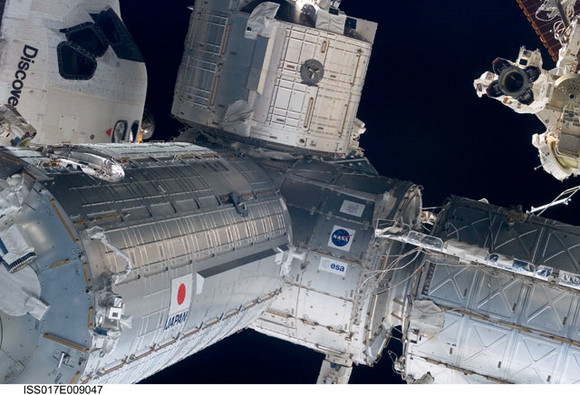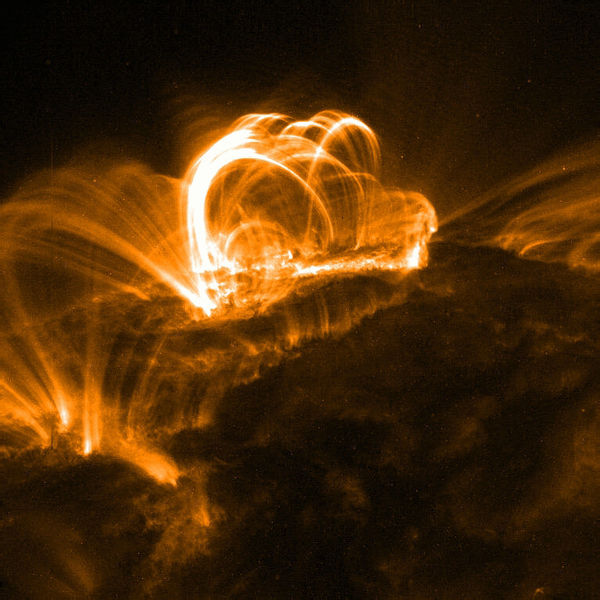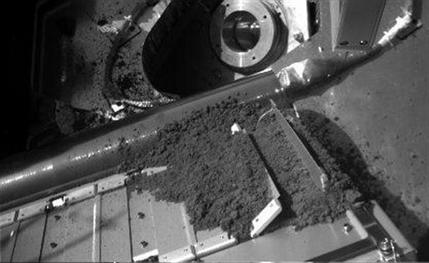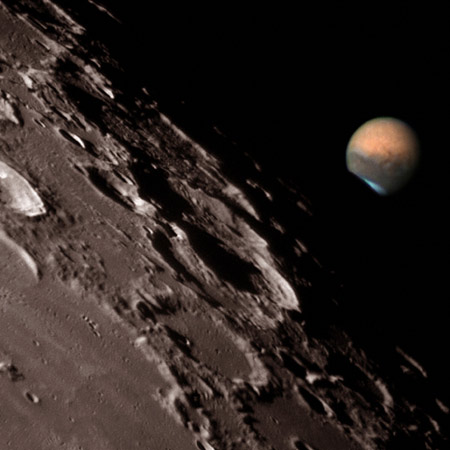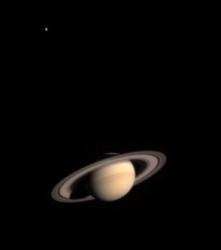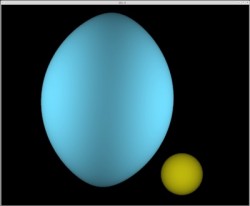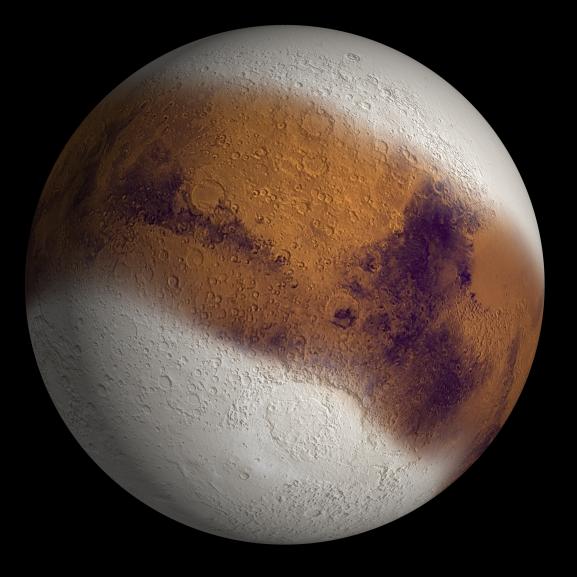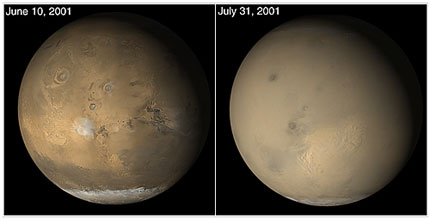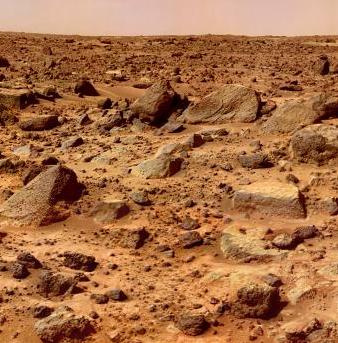The crew of the STS-124 mission has been busy installing equipment on the International Space Station, fixing a toilet, and trying out the latest robotic arm that’s part of the shiny new Kibo module. The image above shows some of the new additions to the station, which just keeps growing in size with every mission. The mass of modules shown are: the Japanese Pressurized Module (left), the Japanese Logistics Module (top center), the Harmony node (center), the Destiny laboratory (right) of the ISS, and the forward section of Space Shuttle Discovery that is docked to the station.
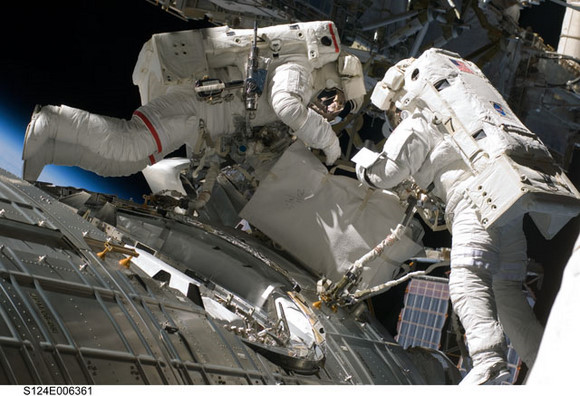
Astronauts Mike Fossum (left) and Ron Garan, during the second EVA for the mission. The two astronauts installed television cameras on the Kibo Japanese Pressurized Module (JPM) that will aid in the Kibo robotic arm operations, they also removed thermal covers from the Kibo robotic arm, prepared an upper JPM docking port for flight day seven’s attachment of the Kibo logistics module, readied a spare nitrogen tank assembly for its installation during the third spacewalk, retrieved a failed television camera from the Port 1 truss, and inspected the port Solar Alpha Rotary Joint (SARJ). In looking at the SARJ, Fossum found grease streaks and a small amount of a dust-like material. In the third spacewalk, coming up on Sunday, the astronauts will take samples of the materials for further testing. They’ll also continue outfitting and activating the Kibo module.
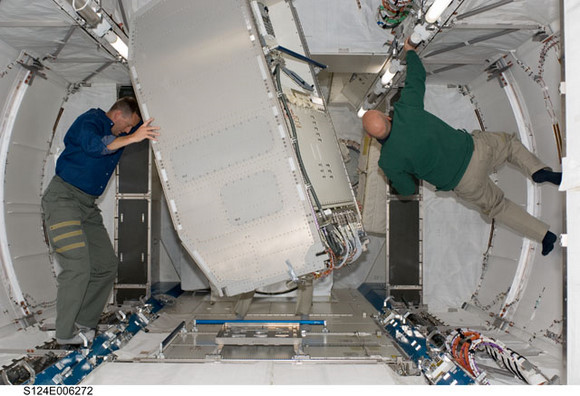
Inside Kibo: STS 124 Commander Mark Kelly (right) and pilot Ken Ham add a rack inside the recently installed Kibo Pressurized Module.
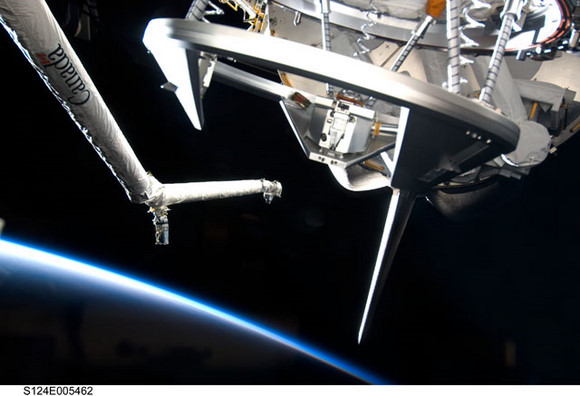
This is a great image of Space Shuttle Discovery with Earth’s limb in the background. Also visible are parts of the shuttle: the Remote Manipulator System (RMS), the docking mechanism, vertical stabilizer and orbital maneuvering system (OMS) pods. This was taken on flight day two, before the shuttle docked with the space station.
Image Source: NASA Human Spaceflight Gallery

